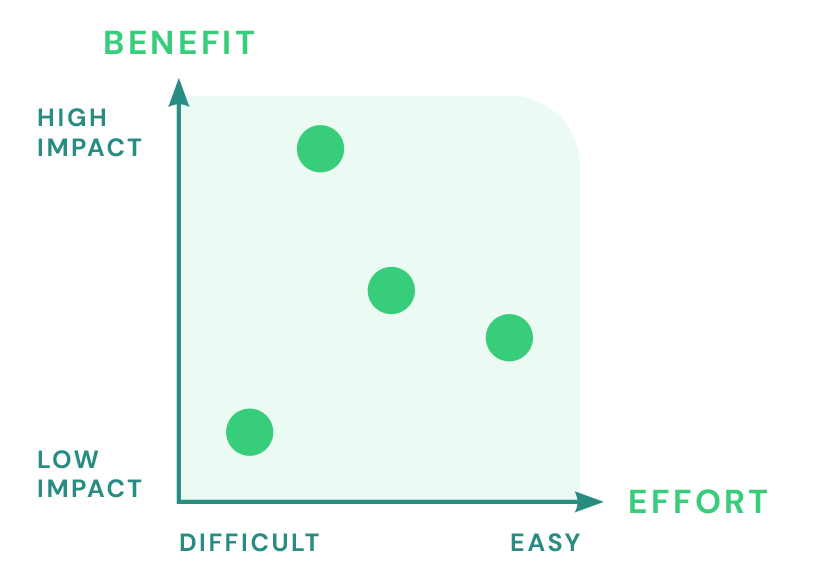The identified solutions are grouped by source of emissions or theme (energy, construction, supply, etc.), and then rated according to feasibility criteria. This can take place in dedicated, thematic workshops involving sustainability managers, thematic/ technical experts and operational teams as/when needed.
Feasibility criteria for rating solutions
- Compatibility with humanitarian missions*
- Carbon reduction impact*
- Conditions for success*
- Human resources required (including skills and positions required)*
- Financial resources required and potential savings generated*
- Environmental footprint reduction impact
- Co-benefits (for the environment, local communities, etc.)
*Key criteria to focus on in the context of a simplified process.

Figure 1: Graph rating solutions based on the level of effort required and the expected benefit in terms of reduced carbon emissions.
High impact solutions should be prioritised (whether they require significant or limited effort):
Fixing objectives and targets
Fixing quantitative targets for each identified solution is a critical step of the roadmap development process.
- Targets should not be considered as performance indicators but rather as practical scenarios for emissions reduction.
- Expressed both in absolute values and in relative terms.
Examples of quantitative targets:
- “Optimise fleet management”: reduce fuel consumption used in land travel by 30%.
- “Fly less and less emissive”: reduce the number of passenger kilometre by 35%
- “Shift from air freight to maritime, road or train”: reallocate 25% of air freight to sea.